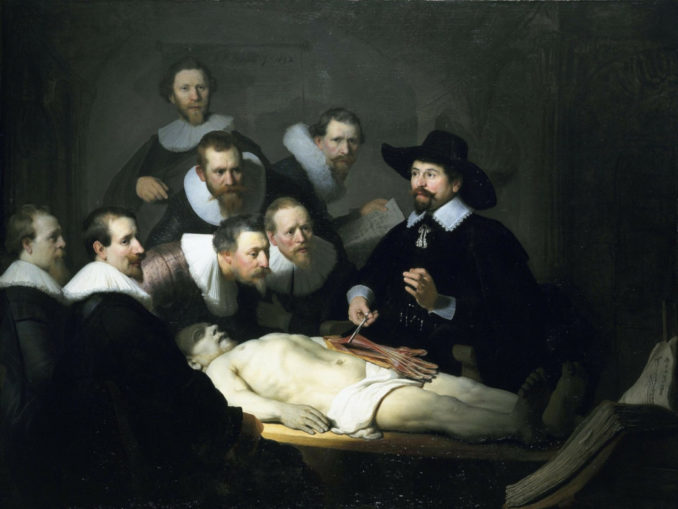
© Colin Cross, Going Postal 2019
I won’t lie, I like art, I like visiting galleries, I even like some “modern” art, although there are limits, as you can see from the featured image above. A sandwich wrapper, carefully torn to evoke “landscape”, with added gold leaf for some sort of effect? This “work of art” was one of the finalists in a £10,000 Landscape competition and for sale for the princely sum of £950. You can fool some of the people all of the time…..
J.M.W. Turner RA (1775-1851)
Anyway, less of that. At the time of commencing to writing this piece there were two exhibitions running side by side in The Gallery at Tullie House Carlisle. One features a small collection of the works of J.M.W. Turner, centred around his visits to the North of England and Southern Scotland, the first of which he undertook in 1797 at the age of 22. This visit and the later one, were said to have been instrumental in his portrayal of light and tone in his work. One of his techniques whilst travelling was to sketch scenes he wanted to convert into finished works and to also quickly paint what could be referred to as a “colour map” for use as reference in his studio. There is some evidence that some of his Lake District paintings, including “Ullswater Lake from Gowbarrow Park” (circa.1815) were at least partly completed whilst in the area. “Wreckers Coast of Northumberland” (circa.1836) may well have been finished in the studio and is probably based on one of the “Colour Maps” in the Tullie House exhibition.

Image by David Mark from Pixabay
I make no secret of my admiration for the works of Turner. His ability to capture mood and fill a painting with light whilst giving a real sense of the moment to viewers of his work is quite extraordinary. He travelled the world, painting, drawing and sketching wherever he went and The Royal Academy thought very highly of him, he was accepted as a member in 1790 at age 15 and a watercolour “A View of the Archbishops Palace, Lambeth” was exhibited in the prestigious Summer Exhibition in that same year. As with many people of an artistic bent Turner was an eccentric. Very attached to his father (his mother died in a lunatic asylum in 1804), Turners eccentricity worsened following his fathers death in 1829 and he had frequent bouts of depression. His studio fell into disrepair and he took less care of himself whilst his artistic output, if anything, increased. He died of cholera in 1851.

Image by David Mark from Pixabay
Rembrandt Van Rijn (1606-1669)

Image by WikiImages from Pixabay
The Rembrandt Etchings exhibition adjoins the Turner exhibition, I know that the painting depicted above isn’t an etching, but it is one of his more famous works and clearly shows the genius of the man as a painter of the human form and, quite possibly, the foremost artist of his generation. The word genius is often over applied but not in this mans case, in my opinion. I’d never really considered etching as an art form, being more interested in painting and, to a lesser extent, sculpture, but this exhibition offers an interesting contrast when compared to the works of Turner. Copperplate etching is not an easy skill to master although Rembrandt was prolific at it. The ability to create an image in reverse, scratched onto a copper plate and then transfer it onto a printing block and thence onto paper is quite remarkable, especially when the results are studied close up.

Rembrandt [Public domain], via Wikimedia Commons

Rembrandt [Public domain], via Wikimedia Commons
Epilogue
Touring the gallery, just (or so it seemed) annoyingly in front of me were a couple of chaps, they were obviously friends of a sort and I got to hear part of their conversation. Much of what they said revolved around the lack of detail in Turners art, although they were also discussing “Brexit”. Mrs. C also overheard what they were saying and indicated that I shouldn’t involve myself but I couldn’t help it. I made the point that although Turner was more than capable of creating detail in his paintings many of his later works were of a kind that were best viewed from a distance to allow the viewer to appreciate the full effect of said works . I did make it clear that this was only my opinion, art, as many other things are, being subjective. As to the “Brexit” question, these two men were “one of each”, a Leaver and a Remainer. The short conversation between us on the subject was quite lively but the old myths that Remain created right at the beginning of this struggle were still firmly seen as truths by the Remain supporter. He held onto the fallacy that the vote to Leave was a vote against the peoples of Europe rather than a vote against the institutions of the EU. I am sure his friend had tried to convince him otherwise and I made my own position crystal clear. I can only assume that, for some people, this is the only way that they can reconcile wanting to be ruled remotely by a corrupt cabal of pseudo “Liberal” chancers.
© Colin Cross 2019
The Goodnight Vienna Audio file



